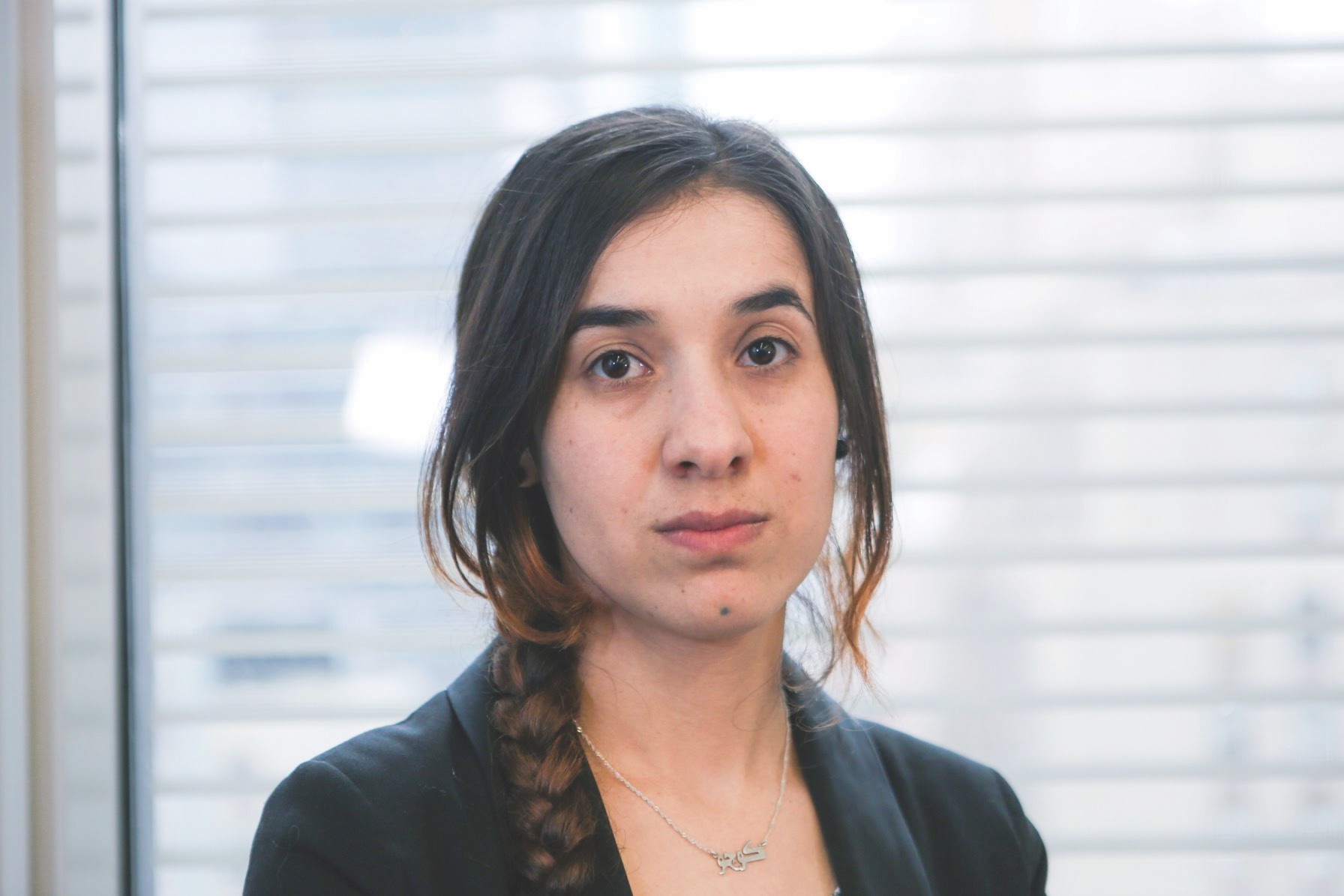
Jews revere the late Holocaust survivor and author Elie Wiesel for his ability to render plainly the unimaginable and give voice to the suffering of his people. With her new book, “The Last Girl” (Tim Duggan Books), Nadia Murad has assumed the stature of a Wiesel for her people, the ancient ethnic religious minority in Iraq known as the Yazidis.
A firsthand account of her sexual enslavement by the Islamic State of Iraq and Syria (ISIS), “The Last Girl” cements Murad’s place as a formidable advocate for the Yazidis, and will hopefully go a long way toward awakening the world to their plight.
Hers is the story of thousands, a responsibility she recognizes and lives up to in the book. The ultimate achievement of “The Last Girl” is that it turns her suffering into strength, rescuing from anonymity the voices of all those targeted by ISIS for systematic rape and murder. Rather than succumbing to the attempted spiritual annihilation by her onetime captors, Murad has seized her story like a weapon to be wielded for her cause.
Before Murad was a human rights icon and a United Nations Goodwill Ambassador, she was the daughter of a large farming family in a frontier town of mud brick homes called Kocho. Her existence was limited to the grassy plains of Sinjar, a financially poor but culturally rich region that until recently was home to most of the world’s Yazidis. Rather than grappling with the continued survival of her people, she mainly concerned herself with her family members, their livestock and daily household chores.

Though Murad describes a happy if impoverished childhood, Kocho’s location at the fringe of Yazidi homeland — “closer to Syria than to our holiest temples, closer to strangers than to safety” — was not without its anxieties. But the true extent of their danger wouldn’t become clear to the villagers until it was too late. The book opens with ISIS spreading up from Mosul like a menacing shadow in the summer of 2014. Yazidi shepherds and their livestock go missing as the terrorist group stokes centuries-old hatred among Kocho’s Sunni Muslim neighbors.
But before Murad’s story descends into the depths of ISIS depravity, it dwells on the Yazidis’ culture, history and even their theology. As much as it is an account of the Yazidi genocide, the book is also a loving ode to a way of life that has now been all but obliterated, detailing the customs, economy and family life practiced by Yazidis prior to the killings. Murad’s book is historic in that it introduces the Yazidis for the first time to a mass, non-Yazidi audience.
Perhaps more pressingly, though, Murad captures the stories of genocide victims, including her family and neighbors, but also examples from across a broad cross-section of Sinjar’s Yazidis. One indigent elderly woman who refused to leave her mud brick shed was set on fire by ISIS militants, Murad writes.
Overnight, Murad — who at the time was in her early 20s — is transported from her former life to that of a sabiyya, literally “the spoils of war,” a sex slave transferred from darkened halls to slave markets to ISIS flophouses.”
Ultimately, the story of persecution is her own. As Murad and her niece are stacking bales of hay after dusk, they watch a line of ISIS trucks snake insidiously across Sinjar’s plains and envelop their village. After a two-week siege, the entire population of Kocho is gathered up in the schoolyard and separated by age and gender. The men are machine-gunned and the unmarried women rounded up onto trucks. Women rush to claim their nephews and younger siblings as their children to avoid the fate of those being herded onto the beds of pickups.
Even just as a straightforward eyewitness account of genocide, the book proves surpassingly valuable. But it goes further: Readers are invited to share in Murad’s probing disbelief at her ordeal — to attempt, perhaps futilely, to reason through it with her. The account is colored by Murad’s incredulity at the inability and the simple unwillingness to help the Yazidis, for instance when she and her fellow captors were driven through the bustling streets of Mosul. “We couldn’t have looked normal, stuffed into the backs of trucks, crying and holding on to one another,” she writes. “So why wasn’t anyone helping us?”
Overnight, Murad — who at the time was in her early 20s — is transported from her former life to that of a sabiyya, literally “the spoils of war,” a sex slave transferred from darkened halls to slave markets to ISIS flophouses.
She recounts her ordeal without shirking from even its most heinous moments, such as when a captor punishes her attempted escape by allowing a group of guards to gang rape her. She remembers — and recounts — horrifying details that a less courageous author might omit or obscure, including the faces and manners of her rapists. “Morjeta acted like a child who had been allowed a treat he had been whining for when he came to rape me,” she writes, “and I will never forget the other guard’s glasses, the way he was so gentle with them and so vicious with me, a person.”
Throughout, Murad reckons with the crimes committed against her and the people who stood by while it happened. Her feelings about Iraqi Muslims are often indeterminate and contradictory, complicated by the fact that it was Sunni Muslims who helped her escape, but her verdict is ultimately a damning one. “Families in Iraq and Syria led normal lives while we were tortured and raped,” writes Murad, who now lives in Germany. “They watched us walk through the streets with our captors and gathered on the streets to witness executions.”
Even more than a simple account of mass, calculated rape, “The Last Girl” is a plea to the community of nations and citizens to revisit their sense of morality. Murad exhorts to the 21st century to live up to the promise of the 20th: that international law reign and genocide not go unpunished. The lessons of the Holocaust ought to compel all audiences — but especially Jewish ones — to take heed of Murad’s call by reading her account and speaking out on behalf of Yazidis.
The book ends on a note of hope rather than condemnation, with Murad recounting a speech she gave in Geneva to a room full of human rights advocates.
“I told them that I wanted to look the men who raped me in the eye and see them brought to justice,” she writes. “More than anything else, I said, I want to be the last girl in the world with a story like mine.”






















 More news and opinions than at a Shabbat dinner, right in your inbox.
More news and opinions than at a Shabbat dinner, right in your inbox.